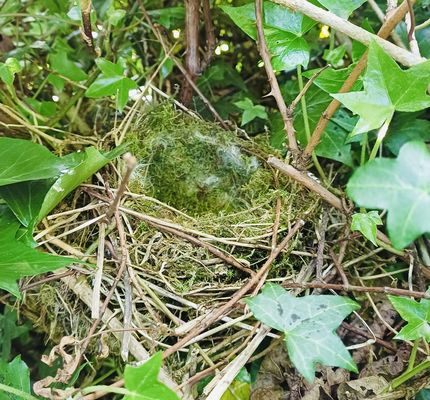MARK Smyth’s a bit down this week – and it’s understandable. The last of his swifts disappeared from his house after just three months here. “They’re probably over the Congo by now,” he said.
They spend just three months in Ireland – to be precise 106 days – which means that it’s a nine-month wait for Mark and other swift lovers before they return to breed again.
The same time it takes to have a baby, a fact not lost on Mark.
“At the start of April it's like a parent saying our baby is about to come, but our babies are the swifts and we’re expecting them to arrive. We’re waiting for the arrivals of the swifts like mums and dads are awaiting the arrival of their newborns!”
Not many of us realise that swifts are here for such a short period. The only other bird that has a similar short time here is the cuckoo – adults lay their eggs in others’ nests and quit the country, leaving the chicks to somehow find their own way back to Africa.
Mark has a rhyme about the cuckoo that sums up its short stay here: “It’s said that the cuckoo ‘Comes in April, sings a song in May, in June it changes its tune, and in July it flies away.’ Its sole purpose here is to lay eggs. And that’s just like the swift.”
The swifts started leaving here on July 20, and although house martins and swallows will stay for another six weeks, the swift is already long gone.
“Unlike the cuckoo, it’s thought the chicks go before adults,” says Mark. “This year a chick that was fledged in Fermanagh was found dead in Holland a week later.”
Dúlra didn’t attract any birds to the swift boxes that Mark put up on his house last year, but maybe he wasn’t playing the calls loud enough. Mark visited one woman’s house in Ballyboley near Larne this year after she had been unable to attract swifts for five years in a row and found that she didn’t have the volume turned up sufficiently..
“It was like whispering,” Mark said. “I told her to pump up the volume as high as it could go, as much as the neighbours could take it, and they came.”
This swift box colony is on the wall of a block of flats in Toulon
Mark and his mates put up boxes on another woman’s house this year and she contacted him that night to say swifts were in it. “I told her that was impossible, so we went down next day and there they were in the box like she said. It’s like catching a fish on your first cast.”
But overall, it was another year of gloomy news for the swift, gabhlán gaoithe in Irish. Bad weather over Europe in early spring halted many of them. Mark had six pairs at his house, two fewer than last year. But the real damage was done when he counted the number of chicks they had.
Normally, they have three per pair. In total, his six pairs had only nine chicks, compared to 18 last year.
He thinks the bad weather in May meant that the mothers weren’t able to get enough food, especially calcium which they need to make the eggshells.
“The swift is different from other birds, it can’t land on the ground to pick up calcium like other birds do. The female uses calcium from her own body to lay eggs, and while she’s away she builds it back up again.”
But he says the lack of help from local authorities is not only sapping his enthusiasm, but putting the swift in real danger of extinction here.
Around the world, authorities are becoming aware of the close association this bird has with the built environment and so it must be taken into account in all works of urban renewal.
One expert in France said of modern designs: “There are no new cavities , they have become smooth and swifts no longer find a place to nest. In a few decades we will only have swifts in science books.”
The swift is the official bird of Mark’s own council, Antrim and Newtownabbey, but he still finds that nests are being destroyed.
In Balyhamage House in the Antrim village of Doagh, Mark found at least 12 breeding swifts – they’ve probably been breeding here for more than a century. The house is making way for 44 homes and Mark says “eight swift boxes or similar will be put up in the new estate”. He adds: “To me, that could mean tit boxes on surrounding trees and that’s another box ticked. I think this whole swift colony will be lost.”
Other cities are much more aware of what we are losing. An impressive swift wall was recently put up in the French city of Toulon after a block of flats where they nested was demolished. The swift boxes were put on a new gable in the shape of a massive swift.
A similar thing was done in Bacu, capital of Azerbaijan. “Azerbaijan can do it, France can do it, but we can’t,” says Mark, with some frustration.
Without the screeching swifts, our skies are so much lonelier. But the nine-month wait begins now. Like expectant parents, we can only let the excitement build.
• If you’ve seen or photographed anything interesting, or have any nature questions, you can text Dúlra on 07801 414804.








